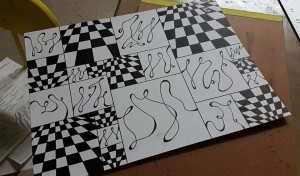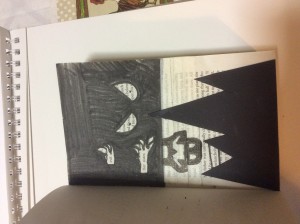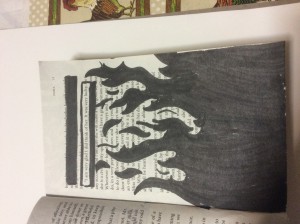New York City is often considered to be one of the largest and most diverse cities on the planet. Its reputation consists of a luxurious and beautiful city, with opportunities at every corner, as it’s been portrayed through all types of media throughout the world for many many years. However, an actual New Yorker would know that New York is more than that. For every single individual who lives in this grand city, New York is different. Its unique to the eyes of every person who views it. Though some bask in the luxury and a higher standard of living, there are also those who work and struggle, and take refuge in the lesser known parts of New York. Any two individuals who are in separate parts of the social ladder would have a different view of the city they live in, and would most definitely see New York different than anyone who does not reside here. Interestingly enough, there are many neighborhoods and areas where an individual can actually physically see the overlapping of social classes, where there is a distinct juxtaposition of a more lower class and a higher class. Once instance of this can be seen in a particular location by Jay Street, at the corner of Prince Street and Myrtle Avenue.
In this particular location, there are many large buildings surrounding it. These buildings are mostly corporate and business, and are made up of mostly glass and steel. The street and area surrounding these buildings are very clean and well kept. You would hardly be able to find a piece of litter or garbage. Very important people walk up and down these streets, wearing fancy business suits and carrying briefcases and such. There is also lots of construction going on in this area, as there are many projects for even bigger buildings. This gives the area a distinct smell of sawdust and burning materials. It also makes the area very loud, of course. With all kinds of heavy machinery and equipment being utilized, it would be expected. One would notice it instantly upon walking here. However, upon walking across a single street, you would be stepping into a completely different environment. Located in the same area, there is a large community of housing complexes. or Projects as many New Yorkers refer to it as. This area contrasts drastically with its neighboring place. These tenements are run down with age and are not nearly as well kept. There is lots of garbage and residue littering the street up and down, and there are also large dumpsters behind each complex, giving the area an unpleasant smell of waste. This is the “New York” that many never view, and is more a part of a lower class residents vision of the City.
What’s interesting about this particular location is the juxtaposition it holds. Its a very contrasting one, and its very clear to distinguish as well. Literally, one can see both of these areas side by side, by standing at the corner of these two streets. Its an even intersection. Its a perfect example of how New York City is different for everyone. There are individuals who live here who don’t even know that such places even exist, for they have their own view of the city, as they have seen it their entire life sometimes. Then there are those who parts of New York like this one are their entire reality, and is their vision of it. One person might be accustomed to having their morning coffee at a place like Starbucks, while another would go to the bodega at the corner. One might have memories of growing up playing in Central Park during the summer, while others remember playing in the fire hydrant with the other neighborhood kids. These types of contrasts are mostly founded on the grounds of social class. People who reside in the higher class will always have a different vision and reality than those in the lower class, especially when residing in a place like New York City. Same way those who do not live in the New York have a distinct vision of it as well, as they have only seen it through Television or other kinds of media. Though social classes is only one of the endless number of factors that contribute to a persons “personal New York” This is what makes New York City so unique to every single individual. If you were to ask anyone what New York was to them, every answer would be different. And for an infinite number of factors. One could even consider this the true definition of being a New Yorker.









